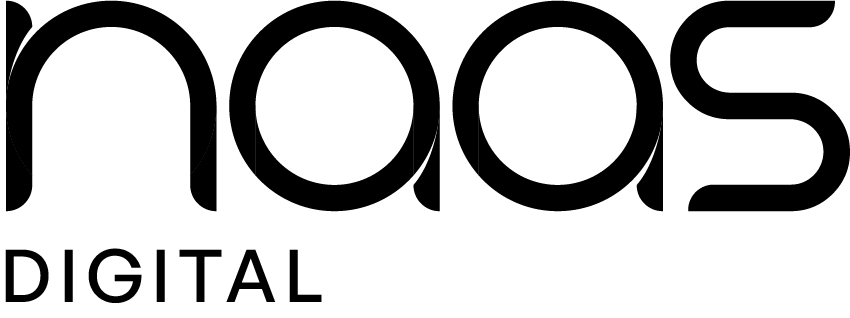Are you ready to think ahead and explore new possibilities for your business's digital future?
Partnering with us means working closely with a dedicated team committed to understanding your unique business goals and crafting a digital strategy that aligns with your vision.
Send us your contact email and we will contact you.
Are you ready to think ahead and explore new possibilities for your business's digital future?
© 2024 — NAAS Digital. All right reserved.
Privacy Policy
Headless CMS:
Decouple Content and Presentation
In today’s fast-paced digital landscape, businesses are constantly looking for ways to manage and deliver content across multiple platforms and devices.
Enter the Headless CMS, a revolutionary approach to content management that decouples content from presentation. This method allows for unparalleled flexibility in how content is created, managed, and displayed. In this article, we will explore the concept of a Headless CMS, its benefits, challenges, and how NAAS Digital can help businesses implement and optimize it to meet their specific needs.

What is a Headless CMS?
A Headless CMS is a content management system where the front-end (the presentation layer) is separated from the back-end (the content storage and management system). In traditional CMS platforms, such as WordPress or Drupal, the front-end and back-end are tightly connected, meaning content is displayed through predefined templates.
Headless CMS platforms take a different approach, focusing solely on content management, and leaving the presentation up to developers. Content is stored centrally, while APIs (Application Programming Interfaces) are used to deliver that content to any device or platform, whether it’s a website, mobile app, or even an IoT device.
How Does a Headless CMS Work?
In a Headless CMS, the back-end is responsible for managing and storing content, while the front-end is independently designed and built by developers. The content is delivered via APIs to various platforms, enabling businesses to distribute their content across different channels seamlessly.
For instance, a business can manage its website content, mobile app content, and even smart device content from one centralized system. The API delivers the same content to each platform, ensuring consistency and efficiency.
Benefits of a Headless CMS
1. Flexibility
A major advantage of Headless CMS is the flexibility it offers. Since the content is decoupled from the front-end, developers have complete control over how it’s displayed. This enables businesses to create custom designs and user experiences without being limited by CMS templates.
2. Omni-Channel Delivery
With a Headless CMS, businesses can deliver content to multiple channels beyond just websites. This includes mobile apps, smart devices, kiosks, and digital signage. The same content can be distributed across all platforms, providing a consistent experience for users.
3. Future-Proofing
A Headless CMS ensures that businesses are prepared for future technologies and platforms. As new devices and channels emerge, companies can easily adapt their content delivery without having to rebuild their entire CMS infrastructure.
4. Developer Freedom
Developers have the freedom to work with the front-end frameworks and tools of their choice. This gives them more control over the design and functionality, allowing for faster development cycles and more creative solutions.
5. Scalability
Headless CMS solutions are highly scalable. As a business grows and expands into new markets or platforms, the content management system can handle the increased demand without significant modifications.
Applications of Headless CMS
1. Websites and Mobile Apps
Headless CMS allows businesses to manage both website and mobile app content using a single platform. This is particularly useful for businesses that want to provide a seamless user experience across web and mobile interfaces.
2. E-commerce
Retailers can manage product catalogs, descriptions, and promotions through a Headless CMS, and push this content to multiple sales channels, including websites, apps, and third-party marketplaces.
3. IoT Devices
Content delivery to smart devices like wearables and voice assistants can be managed with Headless CMS, ensuring that content is available across all connected devices.
4. Digital Signage
Headless CMS can power content for digital signage and interactive display screens, allowing businesses to manage real-time updates and promotions across various physical locations.
5. Multi-Language Sites
Businesses with international audiences can easily manage multi-language sites using Headless CMS. The centralized content hub allows for quick updates and region-specific content delivery without duplicating efforts across platforms.
Challenges of a Headless CMS
1. Complexity
While a Headless CMS offers flexibility, it also requires more technical expertise. Developers must build the front-end from scratch and integrate it with the back-end through APIs, which can increase the complexity of the initial setup.
2. Initial Costs
The cost of implementing a Headless CMS can be higher initially, due to the need for custom development work on the front-end. However, these costs are often offset by the long-term flexibility and scalability it provides.
3. No Built-In Front-End
Unlike traditional CMS platforms, Headless CMS does not come with built-in templates or themes. This means that businesses must rely on developers to create custom interfaces and ensure proper integration with the back-end.
4. API Expertise
Managing content through APIs requires knowledge of API integration and management. Businesses may need to invest in technical expertise to ensure seamless content delivery across all platforms.
Future Trends of Headless CMS
1. Enhanced Personalization
As Headless CMS platforms evolve, they are expected to offer more capabilities for delivering personalized content across different platforms. AI and machine learning will likely play a significant role in optimizing content for individual users.
2. API-First Ecosystem
Headless CMS will increasingly integrate with other API-driven tools, such as marketing automation, CRM systems, and analytics platforms, creating a comprehensive ecosystem for content and data management.
3. AI-Driven Content Delivery
AI is expected to enhance content delivery by analyzing user behavior and preferences in real-time. This will enable businesses to deliver highly personalized content that improves user engagement and experience.
4. Hybrid CMS
The future may see the rise of hybrid CMS solutions, which combine the flexibility of Headless CMS with some of the ease-of-use features found in traditional CMS. This would offer businesses the best of both worlds: flexibility for developers and ease of use for content managers.
How NAAS Digital can help?
NAAS Digital specializes in helping businesses implement and optimize Headless CMS solutions. Whether you're transitioning from a traditional CMS or starting fresh, our team provides end-to-end support. We assist with selecting the right CMS platform, customizing the front-end to align with your brand’s goals, and ensuring smooth API integrations for seamless content delivery.
At NAAS Digital, we understand the technical challenges that come with Headless CMS, and we’re equipped to manage every aspect of the project, from initial setup to ongoing optimization. Our goal is to empower businesses to scale their content strategy and future-proof their operations, ensuring they can adapt to new platforms and technologies with ease.
Conclusion
Headless CMS offers unparalleled flexibility and scalability for businesses looking to decouple content management from the presentation layer. By separating content storage from front-end design, companies can deliver content across a wide range of platforms and devices, from websites to mobile apps and IoT devices. Although Headless CMS requires more technical expertise, its long-term benefits in terms of scalability and future-proofing are well worth the investment.
With the right partner, like NAAS Digital, businesses can unlock the full potential of Headless CMS and ensure their content management strategy is ready for the future.

